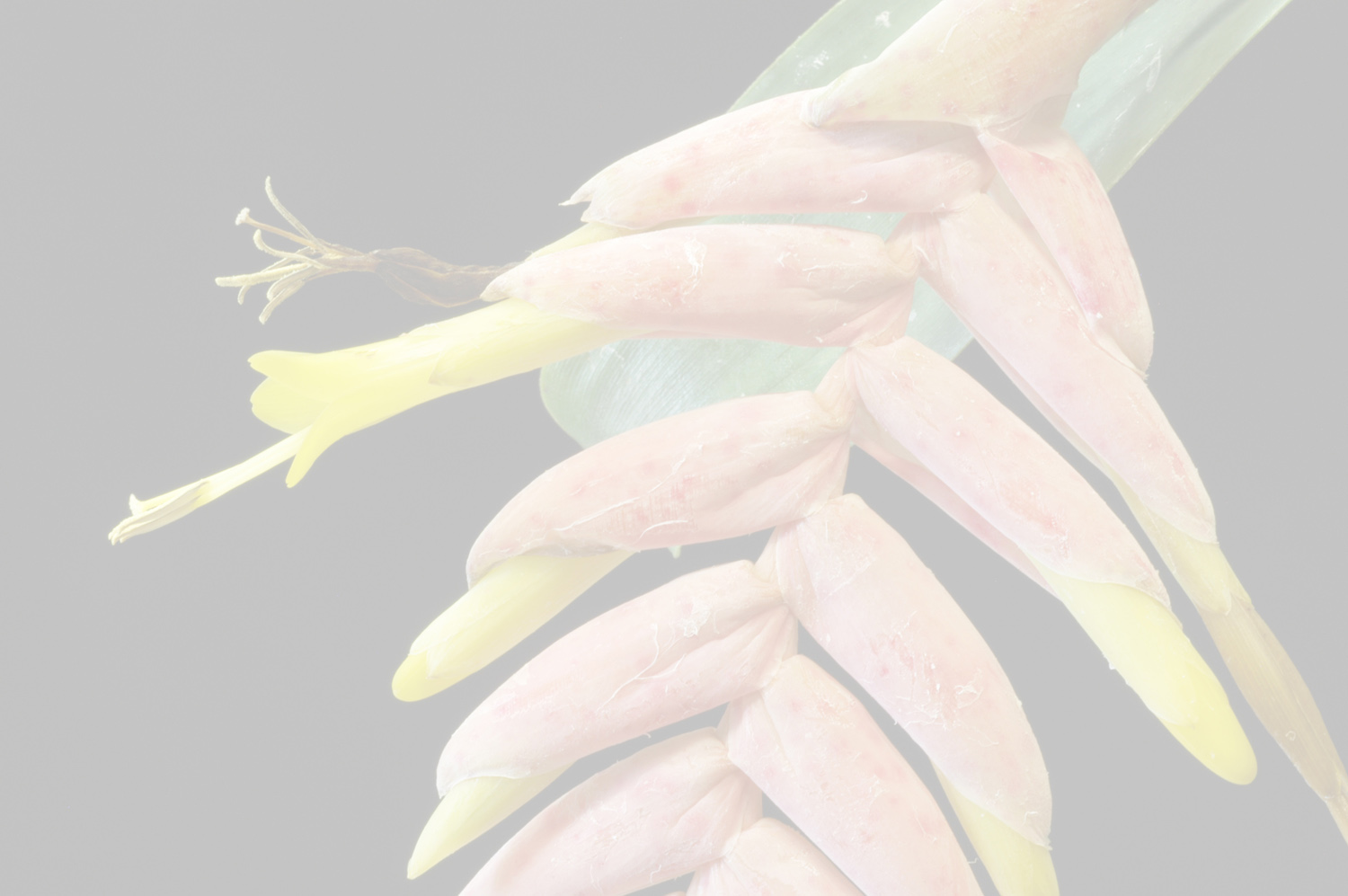


plant lacking rhizomes, flowering 60–80 cm tall. leaves 15 to 20, rosulate, thickly coriaceous, forming a broad funnelform rosette at base; sheath ovate-elliptic to broadly elliptic, suberect, 11–13 × 9–12 cm, very densely brown-lepidote on both sides, pale to dark castaneous; blade narrowly triangular, acuminate-caudate, canaliculate toward the base, suberect-arcuate to spreading, 25–30 cm long, 5–6 cm wide at base, white-cinereous due to the green color completely obscured by a dense layer of coarsely white-cinereous trichomes on both sides, finely nerved mainly abaxially, margins distinctly truncate, ca 2 mm thick, densely and coarsely white-lepidote. inflorescence: peduncle nearly erect, 30– 45 cm long, 0.8–1 cm in diameter, green, glabrous, not sulcate at anthesis; peduncle bracts the basal ones subfoliaceous, the upper ones broadly ovate, acuminate-caudate to acute and shortly acuminate, 3.5–4.5 × ca 2 cm, erect, distinctly exceeding the internodes, imbricate, densely and coarsely whitelepidote toward the apex and outside, strongly nerved-sulcate at anthesis, castaneous toward the base, stramineous toward the apex; fertile part simple, sublinear before anthesis, suberectascending, the upper portion forming an angle of ca 45º in relation to the peduncle, linear in outline with apex acute before and at anthesis, 20–25 × 3– 4 cm, distichously 15- to 21-flowered; rachis 8–10 mm in diameter, stout, flexuous, green to dark purple, glabrous, angled, sulcate after anthesis, internodes 10–13 mm long; floral bracts broadly ovate, acuminate to acute, 30–35 × 25–26 mm, densely white-lepidote near the apex only, ecarinate, not imbricate and secund with the flowers at anthesis, divergent-arranged and slightly inbricate before anthesis, coriaceous, lustrous toward the base, greenish toward the base before anthesis, mainly the basal ones strongly and coarsely corrugate-sulcate at anthesis, stramineous after anthesis, bearing decurrent auricles at base, about equaling 1/2 of the sepals length. flowers ca 50 mm long, anthesis nocturnal, producing a mucilagenous material which partially covers its base and dry, as well as a fruit-like fragrance, very densely and divergent-erect before anthesis, densely arranged and distinctly secund at anthesis, pedicel ca 10 mm long, ca 9 mm in diameter at apex, stout, green, glabrous; sepals oblong-elliptic, distinctly emarginate, 25–29 × 14– 15 mm, green except for the purplish-red margins and apex, glabrous outside, inconspicuously and minutely lepidote inside and producing an abundant mucilaginous substance, ecarinate, thickly coriaceous near the base, apical margins somewhat membranous; petals obovate, apex broadly emarginate, spreadingrecurved at anthesis, ca 42 × 19–21 mm, greenish white, thicker toward the base, bearing at base 2 subspatulate, irregularly long-dentate, ca 13 × 3 mm appendages, basally adnate to the petals for ca 6 mm, corolla ca 35 mm in diameter. stamens: filament free, ca 25 × 2 mm; anther 7–8 mm long, dorsifixed near the base, base sagittate and apex obtuse, 3 of them disposed on each lateral side of the corolla at anthesis; pollen ellipsoid, sulcate, exine reticulate, lumina broadly rounded, muri narrowed. pistil: stigma tubolaciniate, margins long digitate-laciniate, ca 1.5 mm in diameter, green; ovules caudate. fruits unknown.Edited from (21-12-2014): Pereira 1971. (protologue) Species nova in Brasilia Bromeliacearum .